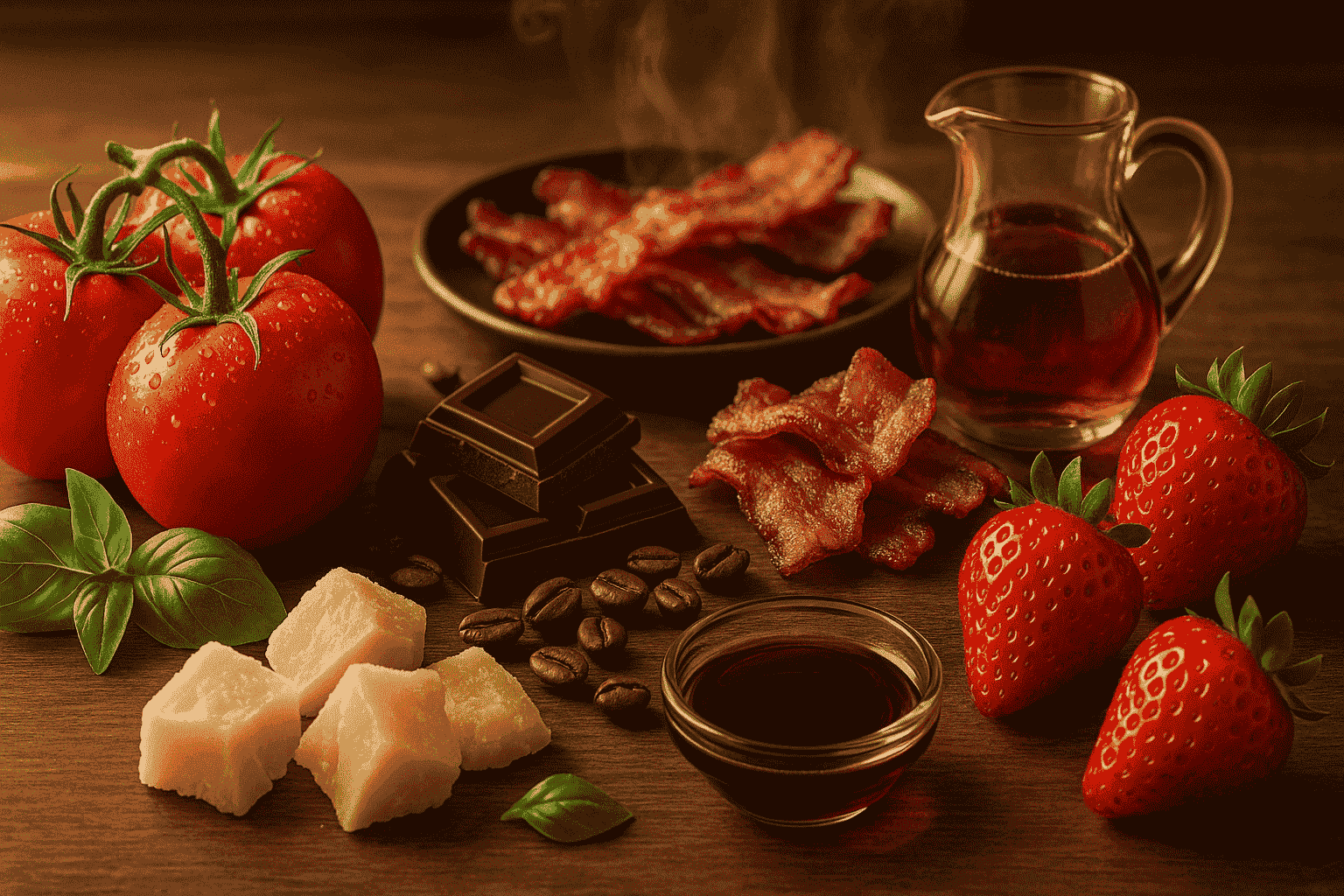The Science of Flavor: Why Certain Foods Taste So Good Together

Have you ever wondered why some food combinations—like peanut butter and chocolate, tomatoes and basil, or bacon and maple syrup—just seem to “click”? Is it magic? Tradition? Or is there a method behind these culinary pairings? In fact, the answer lies in the fascinating science of flavor, a field that blends chemistry, biology, and psychology to explain why certain foods taste irresistible together.
Understanding Flavor: More Than Just Taste
When we talk about flavor, it’s easy to conflate it with taste. Taste is just one piece of the puzzle. Our tongues can detect five basic tastes: sweet, salty, sour, bitter, and umami (savory). But flavor goes beyond these sensations—it’s the sum of taste, aroma, texture, and even sound. The crunch of a fresh carrot, the aroma of roasted garlic, or the fizz of soda all contribute to the overall experience of flavor.
A major player in this complexity is aroma compounds. Humans can detect thousands of different aromas through the olfactory system, which is why two foods with similar chemical compounds often taste complementary.
Flavor Pairing and Shared Compounds
One of the leading explanations for why certain foods taste so good together is the shared flavor compound theory. Foods that share key aromatic molecules often harmonize naturally. For example:
- Chocolate and coffee: Both contain similar volatile compounds like pyrazines, which give them rich, roasted notes.
- Strawberries and balsamic vinegar: The acidity of balsamic complements the sweet, fruity esters in strawberries, amplifying both flavors.
- Tomatoes and basil: The herbal oils in basil contain eugenol, which enhances the sweet, savory esters in ripe tomatoes.
Chefs and food scientists sometimes use gas chromatography to analyze these compounds and predict which seemingly unrelated ingredients might work together—an approach that explains why molecular gastronomy often yields surprisingly delightful pairings.
The Role of Contrast in Flavor
While shared compounds explain harmony, contrast explains why opposites attract in food. Our taste buds respond favorably to foods that balance each other: sweet with salty, acidic with fatty, bitter with umami.
- Salt and caramel: Salt enhances the sweetness of caramel while reducing cloying sugariness.
- Lemon on fish: Acidity cuts through the richness of fatty fish, brightening its flavor.
- Spicy and sweet: Think chili chocolate or mango with chili powder—the heat and sweetness create a dynamic flavor experience that our brains love.
Cultural and Psychological Factors
Flavor is not purely chemical—culture and experience play a huge role in shaping our taste preferences. Foods that are traditionally paired together in a particular culture often taste better simply because we’re accustomed to them. For instance, the combination of rice and beans in Latin American cuisine or soy sauce and sushi in Japanese cuisine feels natural due to years of cultural reinforcement.
Additionally, our brains link flavor to emotional memory. A dish that evokes comfort, nostalgia, or even celebration can taste more satisfying, regardless of its chemical composition. This psychological dimension explains why holiday treats or childhood favorites often feel especially delicious.
Even the presentation of food can influence perception. Vibrant colors, appealing textures, and enticing aromas can enhance the overall experience, making a dish taste better before you even take a bite. This is why professional chefs focus so heavily on plating, aroma, and texture alongside flavor itself.
The Science of Umami and Flavor Synergy
Umami, often described as the savory taste, is central to many of our favorite food pairings. Found in ingredients like mushrooms, aged cheeses, soy sauce, and tomatoes, umami-rich foods can create a phenomenon called flavor synergy. When combined, these foods don’t just add flavors—they amplify each other, creating a taste experience that is richer than the sum of its parts.
For example, tomatoes paired with parmesan cheese produce a deeply satisfying umami blend that is more intense than either ingredient alone. Similarly, Japanese dishes like miso soup rely on combining umami-rich ingredients, such as miso and dashi, to create layers of flavor that are both complex and comforting.
Experimentation and the Future of Flavor Science
Modern chefs and food scientists are taking flavor exploration to new heights by using chemical analysis and innovative techniques. By identifying shared aromatic compounds, they can predict unexpected pairings that might delight the palate—like white chocolate with caviar or watermelon with feta cheese. This scientific approach to flavor, often called molecular gastronomy, allows culinary innovation while still honoring the principles of balance, contrast, and synergy that make combinations work.
With the help of technology, AI, and flavor mapping, the future promises exciting and unexpected taste experiences that challenge our preconceived notions of what “goes together.” Yet, the underlying principles remain rooted in science: chemistry, biology, and the psychology of taste.
Conclusion: The Art and Science of Flavor
Ultimately, why certain foods taste so good together is a complex dance of chemistry, contrast, culture, and memory. Some pairings succeed because of shared chemical compounds, some because of complementary contrasts, and others because of learned associations and emotional connections.
Understanding the science of flavor not only deepens our appreciation for the meals we eat but also empowers us to experiment, innovate, and create new combinations that excite the senses. Every time you savor a perfect pairing, you’re experiencing the intricate interplay of science and art—an invisible symphony that makes food one of life’s greatest pleasures.